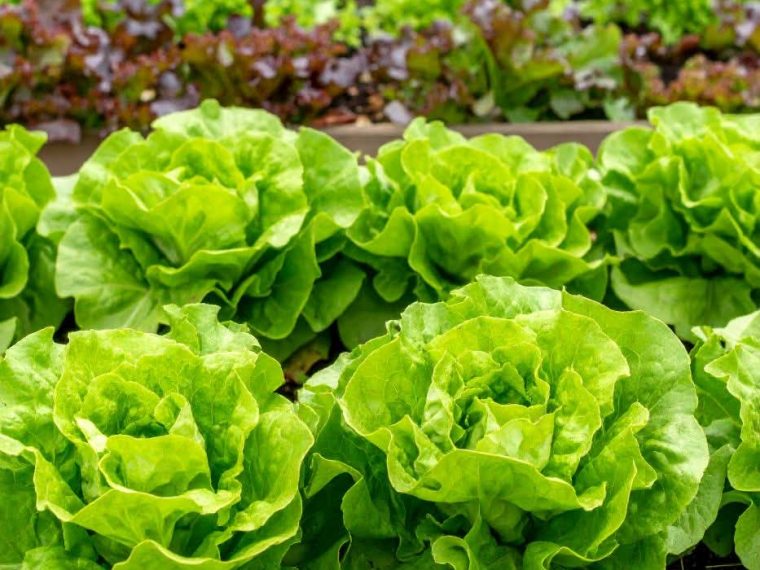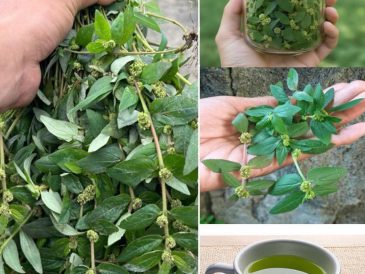Lettuce is a staple in many households, known for its crisp texture and refreshing taste. However, buying lettuce from the store can be costly and often results in waste due to spoilage. Growing your own lettuce not only saves money but also ensures a fresh supply of greens at your fingertips.
Whether you have a sprawling garden or a small balcony, cultivating a lush lettuce patch is within reach. With the right techniques and a bit of patience, you can enjoy a continuous harvest of this versatile vegetable. Follow these 12 tips to transform your gardening experience and say goodbye to store-bought lettuce.
1. Choose the Right Lettuce Varieties
Selecting the right variety of lettuce is crucial for a successful harvest. There are four main types: crisphead, butterhead, romaine, and loose-leaf. Each has its unique characteristics and growing requirements. For beginners, loose-leaf varieties like ‘Black Seeded Simpson’ or ‘Red Sails’ are ideal as they are easy to grow and quick to mature, typically within 40 to 50 days.
Consider your climate and the space available. If you’re in a warmer region, opt for heat-tolerant varieties such as ‘Jericho’ romaine. For cooler climates, butterhead varieties like ‘Buttercrunch’ thrive well. Mixing different types can also provide a continuous supply and add variety to your salads.
2. Understand the Ideal Growing Conditions
Lettuce thrives in cool weather, with optimal temperatures ranging from 60°F to 70°F (15°C to 21°C). It requires about 6 to 8 hours of sunlight daily, but in hotter climates, partial shade can prevent bolting.
Ensure your garden bed has good drainage, as lettuce roots are shallow and can rot if waterlogged. Raised beds or containers with drainage holes can help maintain the ideal moisture level. Consistent temperatures and moisture are key to preventing stress and promoting healthy growth.
3. Start with Quality Soil
The foundation of a successful lettuce patch is quality soil. Lettuce prefers a loose, well-draining soil rich in organic matter. Aim for a pH level between 6.0 and 7.0.
Before planting, amend your soil with compost or well-rotted manure to improve fertility and structure. A balanced organic fertilizer can also be applied to provide essential nutrients. Regularly testing your soil can help you make informed decisions about amendments and ensure optimal growing conditions.
4. Master the Art of Sowing Seeds
Sowing lettuce seeds correctly is crucial for a good start. Direct sowing is often preferred, as lettuce seeds are tiny and can be easily disturbed when transplanting. Sow seeds about 1/4 inch deep and 1 inch apart, covering them lightly with soil.
For a continuous harvest, practice succession planting by sowing seeds every two weeks. This staggered approach ensures a steady supply of fresh lettuce. If starting indoors, use biodegradable pots to minimize root disturbance when transplanting.
5. Optimize Watering Techniques
Lettuce requires consistent moisture, but overwatering can lead to root rot. Water deeply but infrequently, allowing the top inch of soil to dry out between waterings. Aim to provide about 1 inch of water per week, adjusting for rainfall.
Drip irrigation systems or soaker hoses can efficiently deliver water directly to the roots, minimizing evaporation and disease risk. Water in the early morning to allow foliage to dry before nightfall, reducing the likelihood of fungal issues.
6. Utilize Companion Planting
Companion planting can enhance the growth and health of your lettuce. Pair lettuce with plants like carrots, radishes, and onions, which can help deter pests and improve soil health.
Avoid planting lettuce near brassicas, as they compete for similar nutrients. Marigolds and nasturtiums can be planted nearby to attract beneficial insects and repel aphids and slugs. This natural approach reduces the need for chemical interventions and promotes a balanced garden ecosystem.
7. Protect Against Pests Naturally
Lettuce is susceptible to pests such as slugs, aphids, and caterpillars. Implementing natural pest control methods can safeguard your crop. Handpick slugs in the early morning or set up beer traps to lure and drown them.
Introduce beneficial insects like ladybugs and lacewings to control aphid populations. Floating row covers can physically block pests while allowing sunlight and rain to reach the plants. Regularly inspect your plants and remove any infested leaves to prevent the spread of pests.
8. Harness the Power of Mulching
Mulching is an effective way to conserve moisture, suppress weeds, and regulate soil temperature. Apply a 2 to 3-inch layer of organic mulch, such as straw or shredded leaves, around your lettuce plants.
Mulch also adds organic matter to the soil as it breaks down, improving fertility over time. Ensure the mulch does not touch the base of the plants to prevent rot and pest issues. This simple practice can significantly enhance the health and yield of your lettuce patch.
9. Implement Succession Planting
To enjoy a continuous supply of lettuce, practice succession planting. This involves planting a new batch of seeds every two weeks, ensuring a steady harvest throughout the growing season.
Staggered planting also reduces the risk of losing your entire crop to pests or disease. By the time one batch is ready for harvest, the next is already on its way, providing a seamless transition and a constant supply of fresh greens.
10. Harvest at the Right Time
Timing is crucial when harvesting lettuce. For loose-leaf varieties, begin harvesting when leaves are about 3 to 4 inches long. Cut the outer leaves first, allowing the inner leaves to continue growing.
Head varieties should be harvested when they feel firm and reach the desired size. Harvest in the early morning when leaves are crisp and full of moisture. Use a sharp knife or scissors to avoid damaging the plant, and handle leaves gently to prevent bruising.
11. Store Your Lettuce Properly
Proper storage extends the shelf life of your harvested lettuce. Rinse leaves in cold water to remove dirt and insects, then dry them thoroughly using a salad spinner or clean towel.
Store lettuce in a perforated plastic bag or container lined with paper towels to absorb excess moisture. Keep it in the crisper drawer of your refrigerator, ideally at temperatures between 32°F and 36°F (0°C to 2°C). Properly stored, lettuce can last up to two weeks, maintaining its freshness and flavor.
12. Experiment with Hydroponic Systems
For those with limited space or seeking a soil-free option, hydroponic systems offer a viable alternative for growing lettuce. These systems use nutrient-rich water solutions to nourish plants, often resulting in faster growth and higher yields.
Start with a simple setup, such as a Kratky method or a nutrient film technique (NFT) system. These systems require minimal maintenance and can be set up indoors or outdoors. Hydroponics allows for precise control over growing conditions, making it an attractive option for year-round lettuce production.



